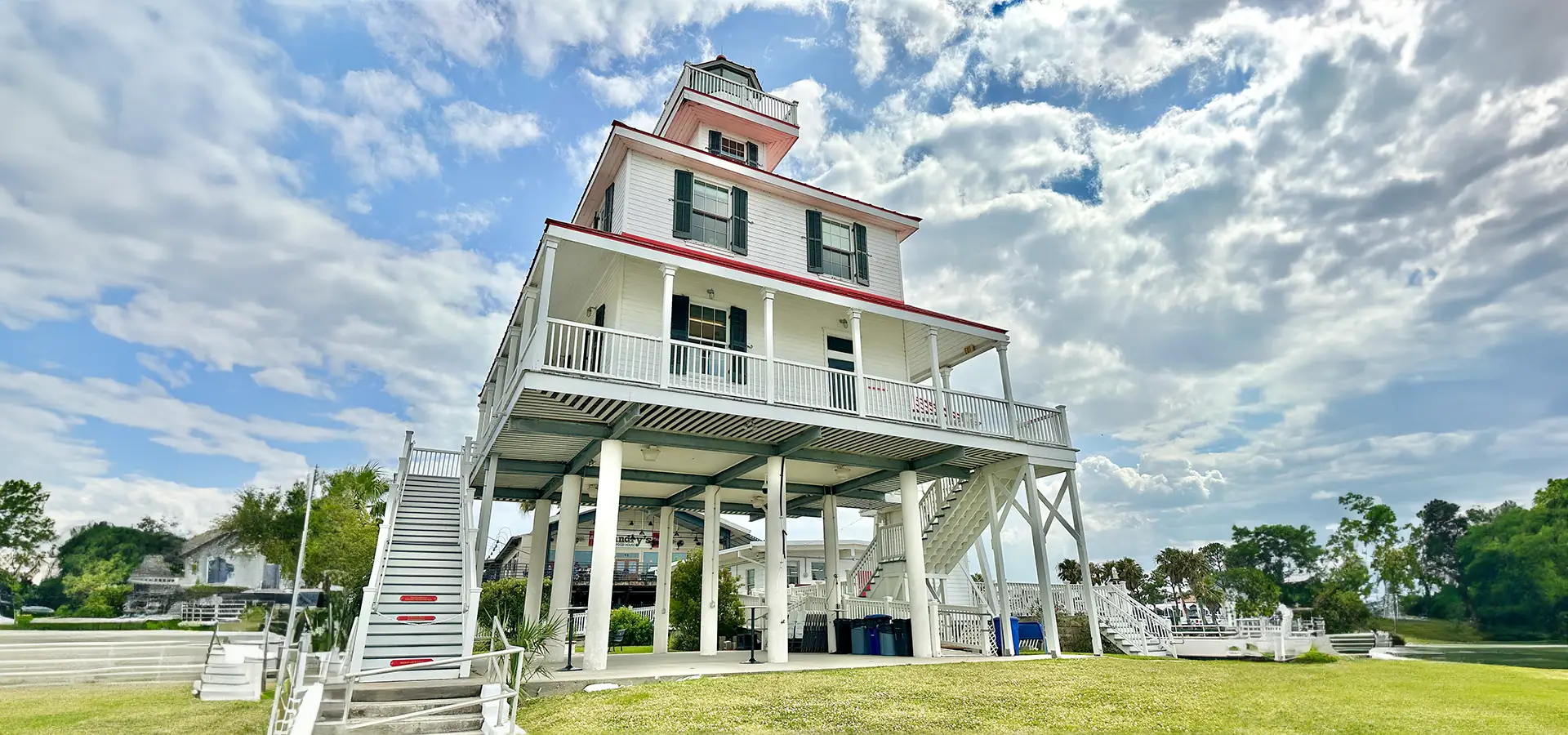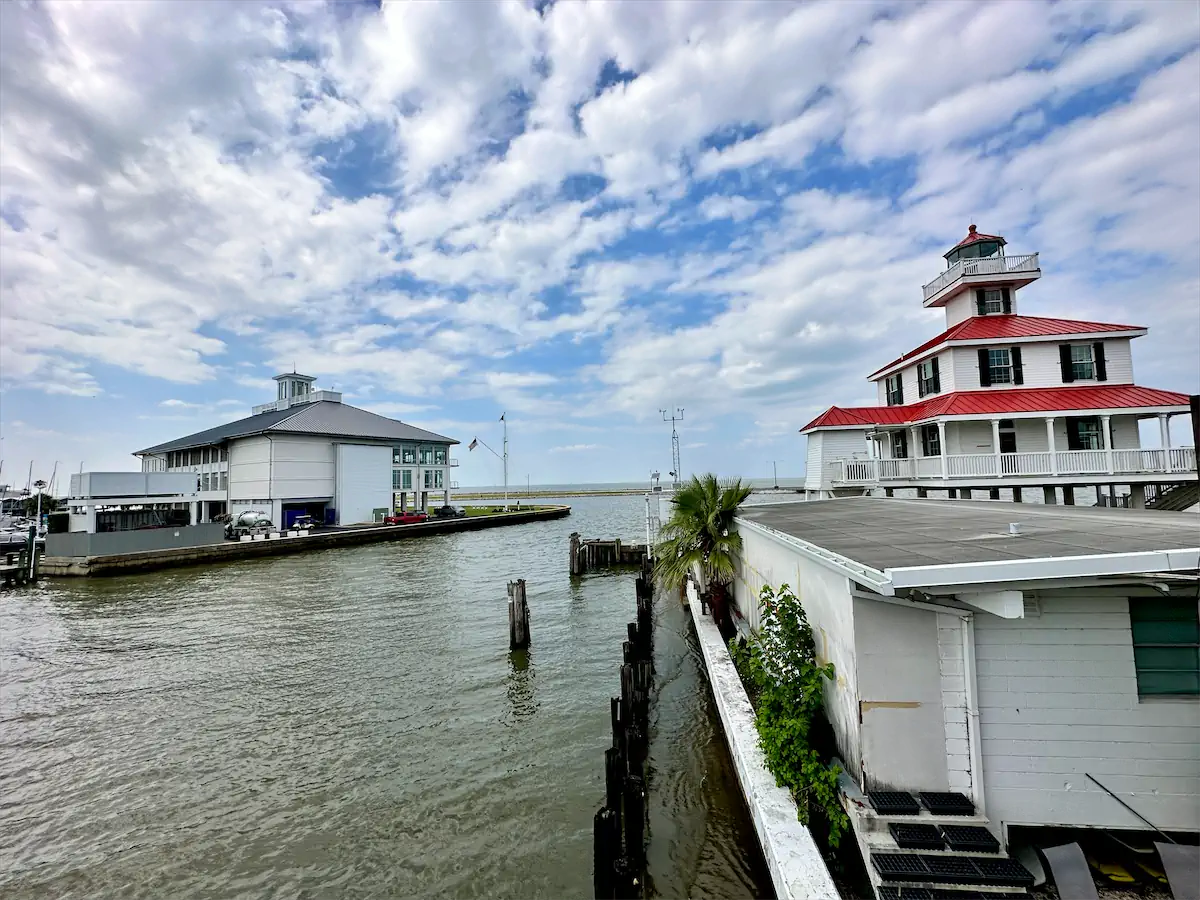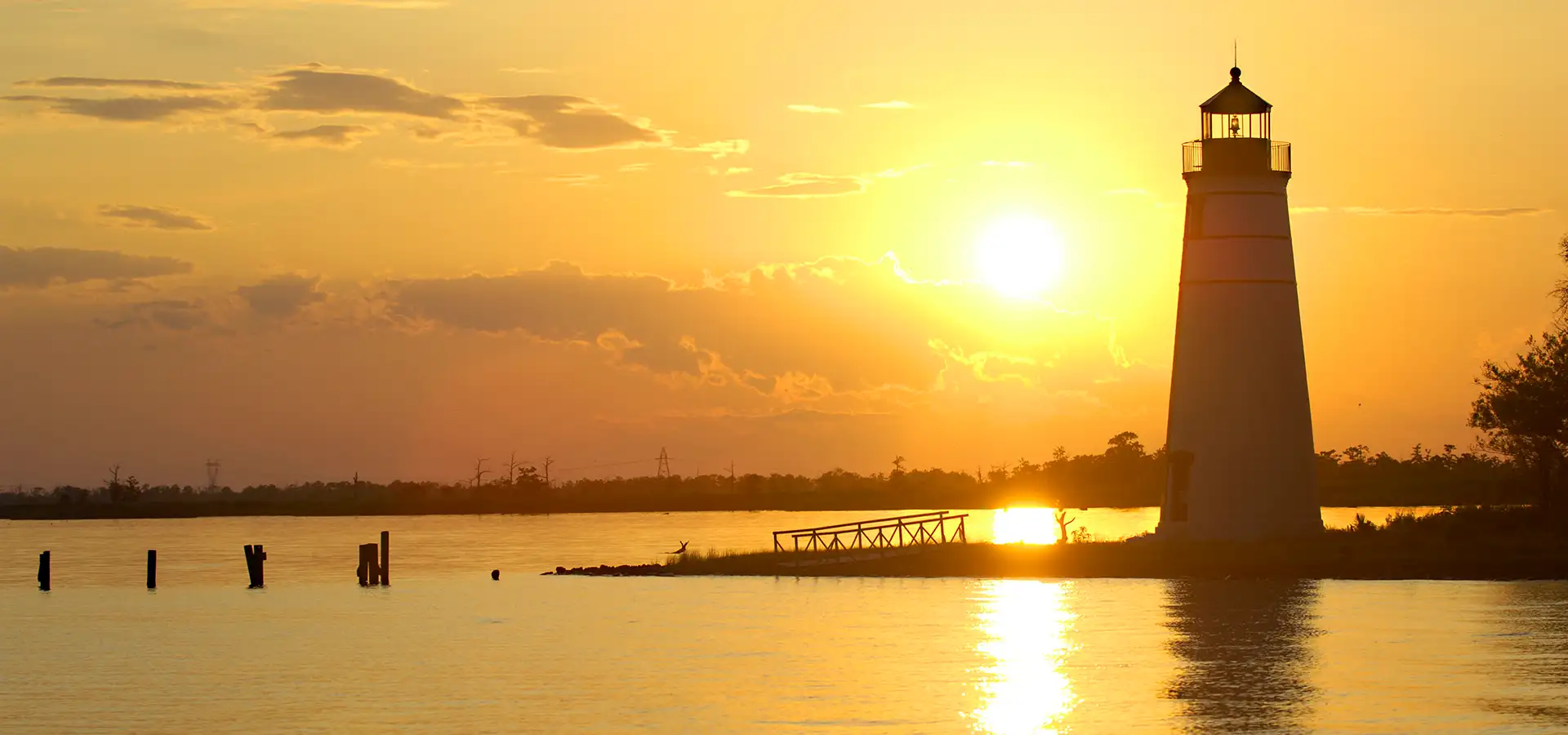
Lake Pontchartrain
The City of New Orleans is nestled between two great bodies of water – the mighty Mississippi River and a magnificent Lake Pontchartrain. This vast and vibrant that lake that stretches 40 miles wide by 24 miles across has a long history as colorful as the stories woven by New Orleans people who call it home.
Long before European explorers set foot on its shores, indigenous tribes revered Lake Pontchartrain as a sacred place. The Tchefuncte, Choctaw, and Houma tribes cherished its bountiful waters, teeming with an abundance of fish, shellfish, and wildlife. They held rituals and traded goods along its banks, creating a rich cultural tapestry that still echoes through the land.
The first European to lay eyes on this majestic lake was the Spanish explorer Hernando de Soto in the 16th century. However, it was not until the early 18th century that the French explorer Pierre Le Moyne d’Iberville recognized the strategic importance of this waterway for trade and colonization. In 1718 the French explorer Jean-Baptiste Le Moyne de Bienville, christen her “Lake Pontchartrain” in honor of the Count of Pontchartrain, the Minister of the Marine for King Louis XIV of France.
As the French settled in the region, they established communities along the lake’s shores, such as New Orleans, which would later become one of the most vibrant cities in the United States. The lake served as a vital link between these settlements, facilitating trade and transportation. It became a bustling hub of activity, with steamboats, schooners, and barges traversing its azure waters, carrying goods and people to and fro.
Over time, the lake became a cherished recreational destination, drawing tourists and locals alike to its cooling waters. Fishing, boating, and swimming became favorite pastimes, and families created lasting memories along its shores. The iconic Causeway Bridge, spanning an astonishing 24 miles across the lake, was completed in 1956, further cementing Lake Pontchartrain’s status as an integral part of Louisiana’s identity.
However, the lake’s ecological balance faced threats in the form of pollution and coastal erosion. Environmental groups including the Lake Pontchartrain Basin Foundation have made great strides to preserve and restore its delicate ecosystem, with initiatives to reduce pollution and protect its wetlands. These endeavors continue to this day, ensuring that Lake Pontchartrain remains a cherished natural treasure for generations to come.

Our Tiki Boat is located on the New Basin Canal. At the mouth of this canal sits two historically significant buildings. The first is the “Old Lighthouse” located on the east side of the channel. The original lighthouse was built in 1838 on a foundation of sheet piling filled in with shells. The tower was octagonal, built of cypress, about 28 feet (8.5 m) high. The lighthouse was heavily damaged during the 2005 hurricane season by Hurricanes Katrina and Rita. In 2006, the Lake Pontchartrain Basin Foundation signed a lease with the United States Coast Guard to repair the damaged lighthouse. It was disassembled and the building was put into storage. Reconstruction of the lighthouse began in February 2012 and the building you see there today is a museum and was completed in 2013.
On the East side of the canal overlooking the harbor’s entrance sits the historic Southern Yacht Club. Established on July 21, 1849, it is the fifth oldest yacht club in the United States. The building you see today is the club’s fourth building, and was completed in 2009. Through more than one hundred and sixty years of prosperity, depressions, wars, yellow fever epidemics, flood and hurricanes, the Southern Yacht Club has maintained its tradition as a bellwether for sailing competition, sportsmanship and hospitality for the city’s upper crust.

Today, as the sun sets over the shimmering waters of Lake Pontchartrain, its history shines through the stories of those who have called it home. It stands as a testament to the resilience of the human spirit and the enduring beauty of nature, a living embodiment of Louisiana’s rich heritage and vibrant culture.
